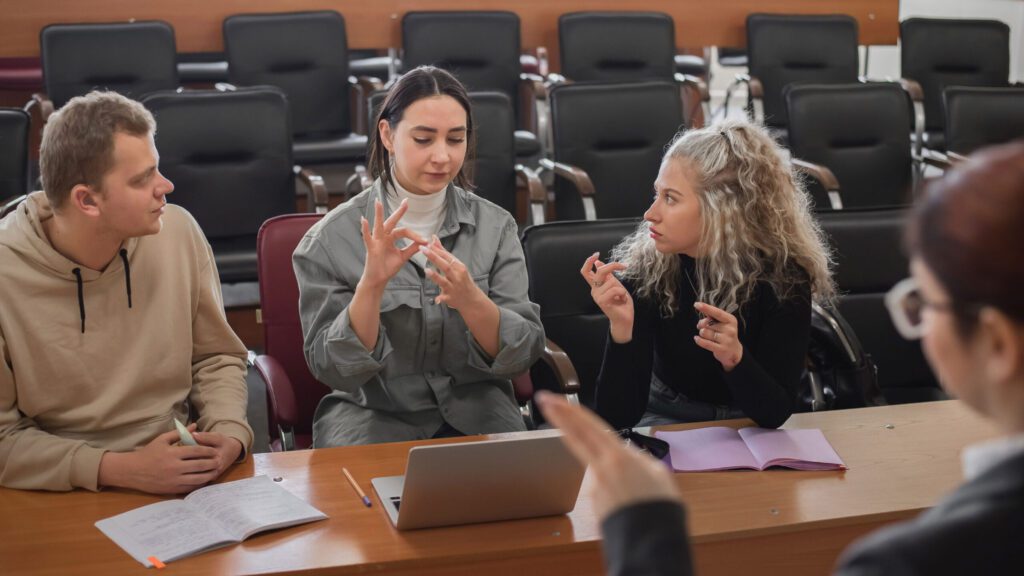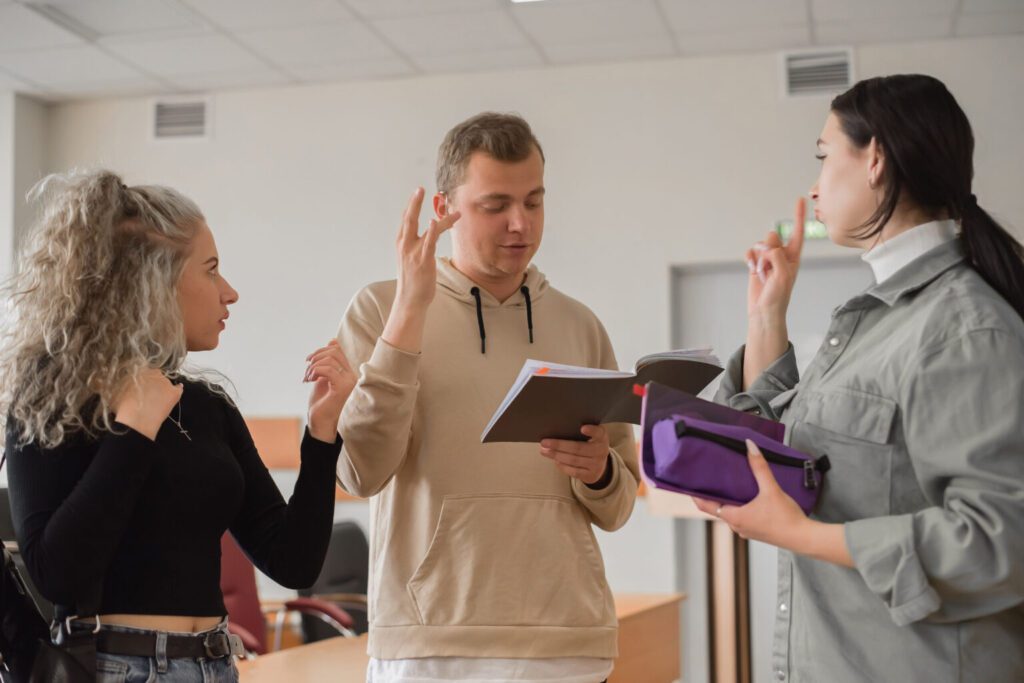
How captions are transforming education for everyone
CART captioning is a technology that allows students to see their instructor’s speech as text on any device in real-time: helping students comprehend in a classroom setting or over video meeting software.
We also offer closed captions for pre-recorded video. You’re probably familiar with those: the text at the bottom of the TV screen or online video that help Deaf and hard-of-hearing viewers follow along.
But a 2019 study found that 80% of those who use captions are not Deaf or hard-of-hearing. They appreciate captioning for convenience, and it helps them understand and remember content. The benefits shown in education:

Reading comprehension
Students can miss critical points or take incomplete notes regardless of how clear a lecture is. Access to captions and transcripts gives students accurate study material and may encourage them to spend less time taking notes and more time actively listening and asking questions.
Captions also assist students in overcoming distractions such as poor audio quality, noisy locations, and interruptions. In fact, a University of South Florida St. Petersburg (USFSP) study found that transcripts improved the learning experience for 94% of students.
Retention and focus
Captions are an asset for all cognitive learning styles. Oregon State University’s Ecampus Research Unit polled 2,000 students across 15 universities and found that 63% of respondents said captions helped them retain information, with 14.6% reporting that captions help them retain video information when studying.
Improved test scores
Captions of classroom and video content enhance students’ notetaking and are easy to repurpose into a searchable study guide to prepare for tests. The USFSP study also found that transcripts improved student test scores by 8%.
How captions are transforming accessibility for higher education
Higher education institutions fall under the classification of places of public accommodation and often receive support from the federal government.

As a result, most schools are subject to Section 504 of the Rehabilitation Act and Title III of the Americans with Disabilities Act (ADA), which mandate equal access and opportunity for people with disabilities. That’s why most higher education institutions must provide captions to ensure students have equal access to online videos.
Who benefits from equal access?
Deaf and hard-of-hearing students
For Deaf students, it’s difficult to watch an interpreter and take notes at the same time.
Captions are essential for Deaf and hard-of-hearing students to understand classroom and video content. Downloading transcripts for later study makes it easy to find any information they missed.
English as a second language (ESL) students
There are 4.5 million public school students in the United States whose first language is not English. Captions assist non-native speakers in properly comprehending crucial concepts, particularly in STEM subjects.

Choosing your captioning service
Captioning services aren’t all the same, there are major differences that affect accuracy.
Captioning software
Most captioning agencies use automated speech recognition (ASR) to generate captions. The software-based approach is low-cost and fast, which is why you’ve probably seen captions generated this way in online videos or live television.
You may have also noticed they’re riddled with mistakes. ASR accuracy rates are typically between 70 and 90%, but factors like accents, names, and uncommon terminology can drive accuracy rates down. That’s a major hurdle in educational settings, especially for Deaf or hard-of-hearing students who rely on captions.

Live captioning agents
Sorenson employs human captioning agents to transcribe presenters’ speech in real-time. With stronger language recognition and background knowledge of the subject matter, they produce captions with superior accuracy so students can see the instructor’s exact words.
Their ability to understand pauses and vocal cues better than computers also means our agents can format and punctuate caption text for easier reading and comprehension.
Sorenson works with colleges and universities across the country to provide greater accessibility to their students and stay ADA compliant. Contact us today and get started.

